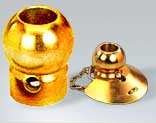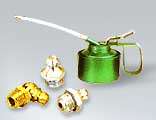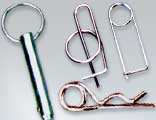Manufacturers
and Exporters of
Tractor Linkage parts :
Linch pins, PTO pins/ Snappers pins/ Wire lock pins, Hair
pin/ Grip clip, Safety pin, Hitch Pin, Quick release pin/ Cotterless
hitch pin, Toplinks, Lift arm pins, Top link pin, Stablizer pin,
Clevis pin, Replacement ball, Ball with guide cone, Draw bar
Exhaust clamps :
M8, M10, Ford, Audi, Citroen, Mini-clamp, Pipe-Assembly,
Body-Bands, Weather cap, Rain cap
Fasteners :
Bolt, Nuts, Cotter pin, Springwasher, Springpin/Dowell pin, Clevis
pin, Pop rivet/ Blind rivet, S-Hook, Shaft-locking collars, woodruff
keys, machine keys
Other products :
Battery terminals - Brass & Lead, Gate fitting, Ornamental Drop
forged Fence fittings/Railing heads, Wheel spinners. |
|








